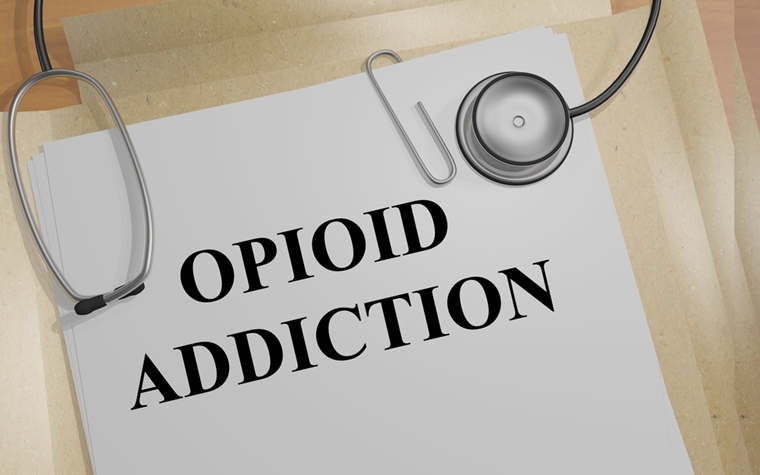CHARLESTON — West Virginia Attorney General Patrick Morrisey recently led a coalition of 37 states and territories urging health insurance companies to examine financial incentives that contribute to the opioid epidemic in West Virginia.
Using information from Morrisey's office, the following question and answer guide explains why the initiative matters.
Q: Why is this important?
A: We are losing too many friends, family and neighbors to opioids. Many started down their path with a prescription opioid. The Surgeon General reports that as many as 2 million Americans are currently addicted to or otherwise dependent upon prescription opioids. This initiative is so important, and hopefully effective, because there are 37 attorneys general, both Republicans and Democrats, working together as a united front to shine light on how current coverage and payment policies may unintentionally be fueling this horrible epidemic. Our office is pleased to take a leadership role in this initiative because we believe that this can have a tremendous impact in reducing the number of people who are initially exposed to opioids, and in the long-term, reduce the number of people who overdose.
Q: Why is the AG’s office involved?
A: We are charged with protecting consumers, including patients suffering from chronic pain and opioid addiction. Among other things, we are committed to protecting patients from unfair or deceptive business practices and ensuring that insurers provide consumers with transparent information about their products and services. We have witnessed firsthand the devastation that the opioid epidemic has wrought on our state in terms of lives lost and the costs it has imposed on our healthcare system and the broader economy. We are committed to using all tools at our disposal to combat this epidemic and to protect patients suffering from chronic pain or addiction.
Q: How do prescription opioids contribute to our opioid epidemic?
A: There is a correlation between the increased supply of prescription opioids, opioid abuse, and drug overdose rate. Prescription opioids have quadrupled since 1999; however, the amount of pain reported by Americans has remained steady. The oversupplying of these narcotics has led to as many as 10 million people reporting nonmedical use of opioids. Over half of these individuals obtained these pills for free from a friend or relative, while nearly a quarter obtained them directly from a doctor. In addition, nearly 80% of heroin users first became addicted to opioids through prescription pills.
Q: How have we gotten here?
A: For too long doctors have been incentivized to prescribe opioid medication for pain management because of the high-likelihood of insurance coverage and the limited insurance coverage of alternative treatment options. This despite the American Academy of Neurology stating opioids show “no substantial evidence for maintenance of pain relief or improved function over long periods of time.” Another study concluded that the use of opioids to treat chronic, non-cancer related pain lasting longer than three months is “ineffective and can be life-threatening.”
Q: What are the next steps?
A: We are reaching out to insurance companies in the state and across the country asking them to review their policies and identify problematic areas that may unintentionally fuel our opioid epidemic. Next, of course, is to encourage reforms to these polices and spur increased use of non-opioid alternatives for treatment of chronic, non-cancer pain.
Q: What does success look like?
A: Opening a dialogue with insurers about their policies, and the downstream effects of these policies, will be a huge success. We hope that this dialogue will result in more options available for doctors looking to best manage their patients’ pain. A correlating benefit of this would be more conversation taking place between doctors and patients about what type of pain management treatments they believe would be most beneficial. In the end, we hope there are fewer opioid prescriptions written, resulting in a dramatically reduced supply open to diversion, and ultimately, fewer individuals addicted to these drugs and overdosing from their harmful effects.
Q: Are alternatives reliable?
A: While there are situations where opioids represent an appropriate pain remedy, doctors should be encouraged to consider effective non-opioid alternatives. No alternative is effective or appropriate in every situation, but research points to a number of conditions that can be treated without resorting to a dangerous, and addictive, opioid prescription. We hope to incentivize alternatives when promoted by evidence-based techniques that are effective at mitigating pain, and, over the long-run, more cost-efficient.
Q: What costs are not considered when prescribing an opioid?
A: Most important is the risk of addiction and overdose that accompany each opioid prescription. There are also healthcare costs associated with those prescribed opioids for chronic pain, many of these costs are shared between government and health insurance companies. In terms of costs, the CDC estimates the opioid epidemic is costing the US economy $78.5 billion annually. State and local governments spend nearly $8 billion a year on criminal justice costs related to opioid abuse.
Q: What non-opioid alternatives may be available?
A: There are many, including but not limited to, physical and occupational therapy, acupuncture, massage therapy, chiropractic care, and cognitive behavioral therapy.
Q: What are questions patients should ask their doctors?
A: Patients can ask their doctor what they can do to talk to insurers about opportunities to cover necessary treatments not typically covered. They can also ask their doctor to document what treatments are preferred and why they are preferred, if not necessary, even if they aren’t covered by insurance. Whenever patients are prescribed medication for pain management, they should ask their prescriber: Is this an opioid? If so, is there an alternative treatment? If there is no alternative, is this the lowest effective dose?
